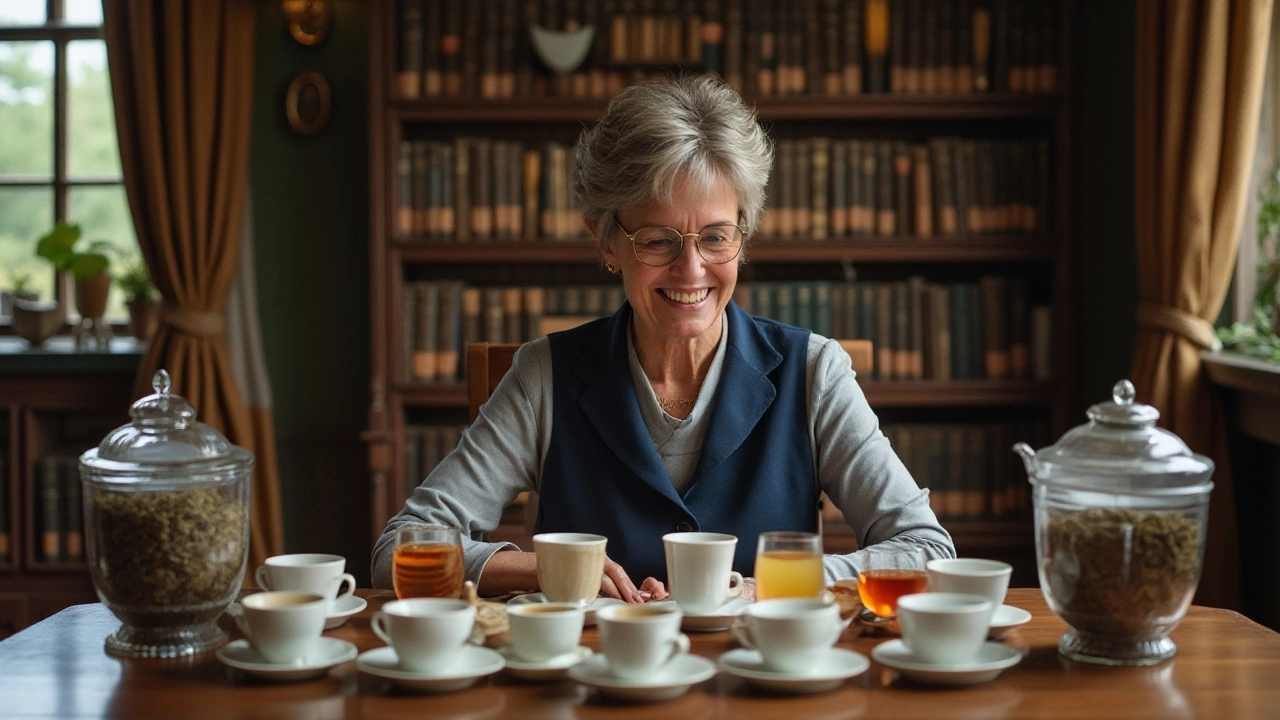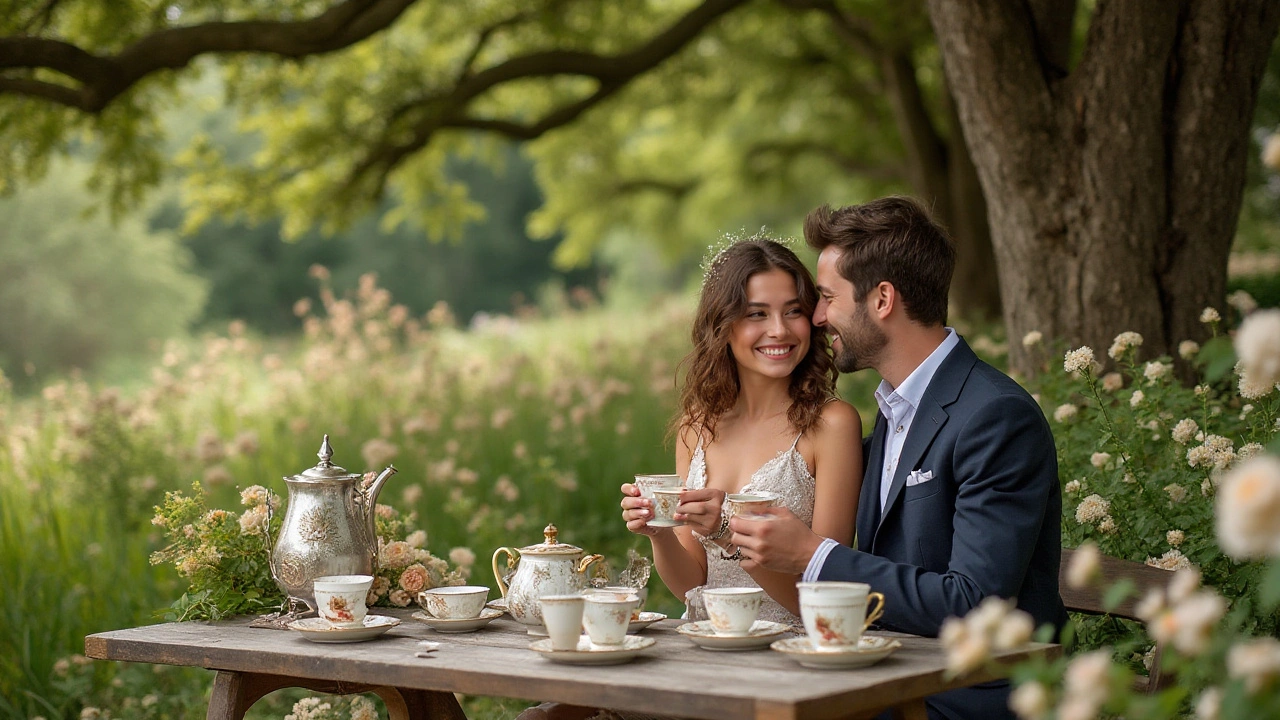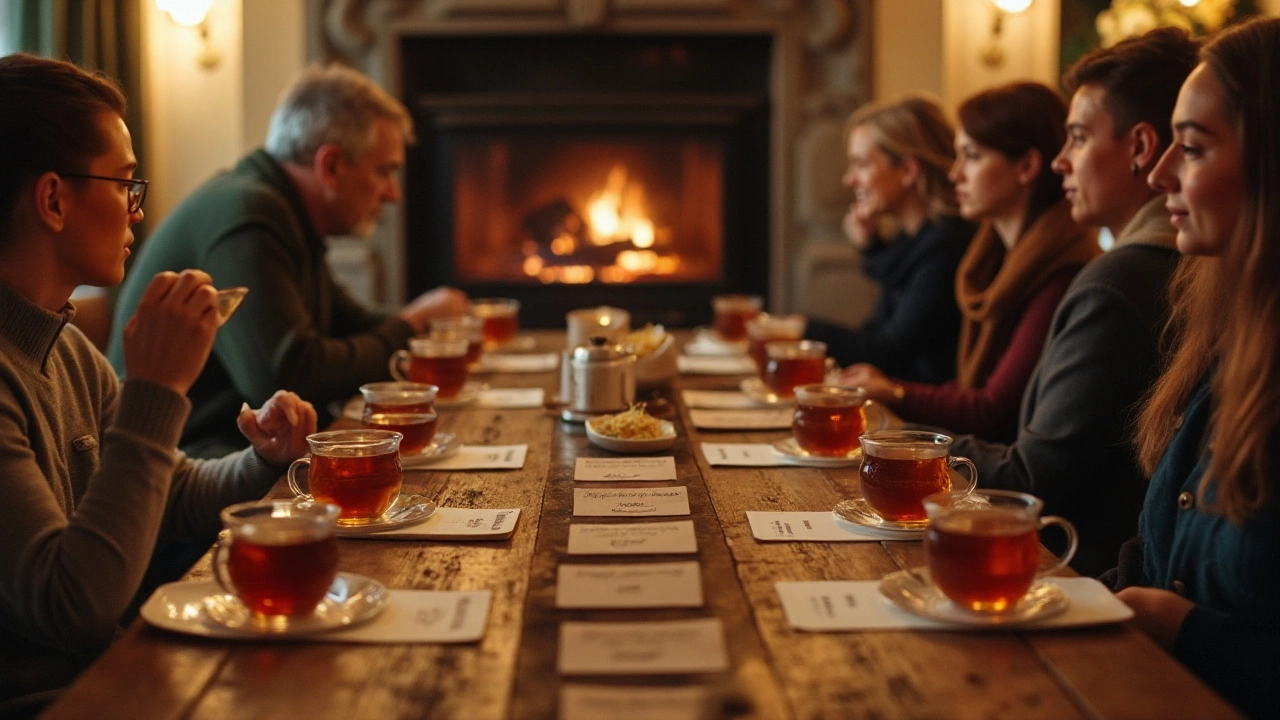The ancient art of tea tasting is not just an examination of flavors; it’s a full sensory experience that draws you into the world of this cherished beverage. For centuries, tea has been more than just a drink; it's a tradition, a ritual, and a journey through time and cultures.
As we delve into the four essential stages of tea tasting, you'll discover how to heighten your senses and deepen your appreciation for tea. Each stage reveals new dimensions—from the fragrant bouquet of the leaves to the subtle complexities lingered long after the last sip. Get ready to embark on a journey that enriches both mind and palate.
Aroma Exploration
In the world of tea, aroma stands as one of the most enchanting aspects of the tasting experience. As you begin your journey into the olfactory universe of tea, you'll find an aromatic spectrum unlike any other beverage. Breathing in a tea's fragrance is not just the first step; it’s an intimate encounter with the heart and soul of each brew. Such is the power of tea aroma that in some Asian cultures, the act of smelling is as venerated as the act of tasting.
When exploring the aroma of tea, you'll discover variations that can be as floral as a garden in spring or as deep and earthy as a walk through a forest after rain. Engaging in this stage, it is beneficial to experiment with different sniffing techniques. Are you taking a quick whiff, or letting the scent settle around you before inhaling deeply? Each method might reveal distinct nuances, providing insight into the complexity and character of the tea you hold. It’s fascinating how the aroma can forecast flavors you will soon find in the cup.
One cannot overstate the importance of the environment when evaluating a tea's aroma. A clear space free of competing odors can significantly enhance the olfactory experience.

Visual Appreciation
The way tea looks is where the journey often begins for any tea aficionado. This stage, aptly named Visual Appreciation, is all about taking a moment to revel in the sight of the tea leaves, both dry and brewed. Before the senses of smell and taste come into play, your eyes get the first encounter with the tea's unique story. This initial examination offers insights into the quality and type of tea, with each type having its own distinctive appearance. Whether it’s the twisted leaves of an oolong or the bright green of a freshly picked sencha, what you see reveals much about the production process. Take, for instance, the black tea leaves, often darker and more oxidized, usually indicative of robust flavor profiles.
Once the leaves are in the pot, and the tea begins to brew, the color of the liquor becomes a focal point of interest. This hue gives hints about the tea's composition and strength; light golden-brown suggests a gentle white or green tea, while a deep amber tends to signal a more full-bodied black or heavily fermented tea. Variations in color, clarity, and brightness are not only visually striking but are also clues to the tea's freshness and how well it was processed and stored. It's a fascinating play of nature where light interacts with the tea, revealing its depths and layered textures.
"The clarity and color of the tea liquor are akin to looking into the soul of the tea," notes John Harney, founder of Harney & Sons, reflecting on the importance of visual cues in tea appreciation.
When considering tea stages, it is critical to pay attention to how the appearance changes over time and with temperature. Observe how the tea unfurls as it steeps, releasing not only its flavor but displaying a delicate dance as the leaves open up. There’s a sense of intimacy in watching the transformation from dry leaf to wet, expanded forms, hinting at the complexities waiting in each cup. This particular stage connects the drinker to the ritualistic side of tea preparation, instilling a sense of calm and meditative practice. As you consider the hue and vibrancy of your brew, balance it with scent and upcoming taste to enrich your entire tasting experience, ensuring each cup not only satisfies the taste buds but also pleases the eye—that essential first step in complete tea enjoyment.

Savoring Flavor
The moment hot water kisses delicate tea leaves, a transformation begins, releasing an array of flavors that dance on the palate. The act of savoring tea flavor is both art and science, allowing connoisseurs to unlock the full potential within each cup. For those who truly wish to delve into the nuances of tea, it's crucial to approach each brew with curiosity and attention. Diverse flavors arise from the variety of tea, its origin, and even the time it's harvested. Consider tea tasting an invitation to connect with these narratives woven into each sip.
Start by noting the initial flavor profiles; whether it be the earthy notes of pu-erh, the floral essence of an oolong, or the crisp and brisk character of a classic black tea. As the liquid rolls over your tongue, let yourself linger in the moment to experience both overt flavors and subtle undertones that might otherwise go unnoticed. These hidden hints often tell stories of the growing conditions or the fermentation process. As the prominent taste fades, see how the layers shift, revealing surprising sweet, savory, or spicy dimensions.
"Tea has a mysterious reputation, often consumed mystically, without consideration for its true complexity," notes John Harney, a renowned figure in the world of tea. Understanding the full spectrum of flavor requires a slow approach, often tasting the tea multiple times as it cools to observe changes in flavor dynamics.
Practice awareness of how different water temperatures can alter your tea flavor; sometimes, a slight change in degrees can make the difference between a bright, lively experience and a subdued one. Experiment with steeping times, as they are fundamental in crafting the depth of flavor you desire. This highlights how tea is not just a beverage of habit, but an extremely versatile drink offering countless opportunities for experimentation.
For those who wish to refine their palate further, engage in comparative tastings. This method involves tasting several types of tea side by side, usually with a focus on variety, region, or processing method. Use a neutral palate cleanser, such as water or plain crackers, between samples to maintain a clean slate for tasting. This practice sharpens the senses and provides a vivid showcase of how tea can vary dramatically even within a single category.
To accentuate your tea appreciation, consider maintaining a tea-tasting diary. Jot down observations on the changing flavors and mouthfeels. This method anchors the fleeting, ethereal qualities of tea to memory, allowing for a richer, more informed experience with each subsequent sip. Remember, letting the flavors unfold themselves naturally without rush deepens the relationship we have not only with tea but with the moment itself.

Lingering Aftertaste
The final stage of tea tasting, lingering aftertaste, is often where much of the magic happens. After you swallow, a complex array of sensations continues to unfurl across your palate. This stage is an intricate dance of flavors that extends the tea-tasting journey beyond the initial sip, engaging your senses in subtle and surprising ways long after the cup has left your lips. Emphasizing the tea flavor, the aftertaste can vary dramatically from one tea to another, often leaving a lasting impression. This continuation of sensation is what many tea connoisseurs seek, as it provides deeper insight into the character of the tea.
A well-crafted tea often leaves a delightful aftertaste that can be floral, fruity, nutty, or even slightly bitter, mirroring some of the aromas detected initially. It's not just about flavor but texture as well. Some teas may coat the mouth with a velvety smoothness, while others impart astringency that resonates on the tongue. The quality of the aftertaste can be a significant indicator of a tea's depth and complexity. To truly appreciate this aspect, one might reflect on how the flavors evolve or fade, offering clues to the tea's origin and processing. As noted by a renowned tea expert, the aftertaste "tells the story of the tea's journey from leaf to cup," reminding us that each sip is part of a much larger narrative.
Interestingly, the chemistry behind these lingering flavors involves the interaction of various compounds present in the tea, which are influenced by factors such as terroir, growing conditions, and processing methods. For instance, the presence of catechins can contribute astringency, while amino acids like theanine often offer a sweet, umami roundness. Discovering these characteristics enhances one's enjoyment and understanding of the tea appreciation process. To detect these aftertastes effectively, it's advisable to savor the tea slowly, paying attention to how the flavors evolve once the liquid has been swallowed. Allowing the palate to rest between sips can also reveal hidden nuances.
According to an experienced tea taster, "The lingering notes of a tea are a reflection of its soul, revealing the dedication and expertise involved in its cultivation."By taking the time to experience the aftertaste, you can uncover deeper layers of enjoyment and insight into the nature of tea. Whether you're indulging in a robust Assam, a fragrant Jasmine pearl, or a rare pu-erh, the journey doesn't end after the cup is emptied. Each aftertaste is an invitation to explore, appreciate, and reflect on the unique journey of the tea leaves that made it all possible.


